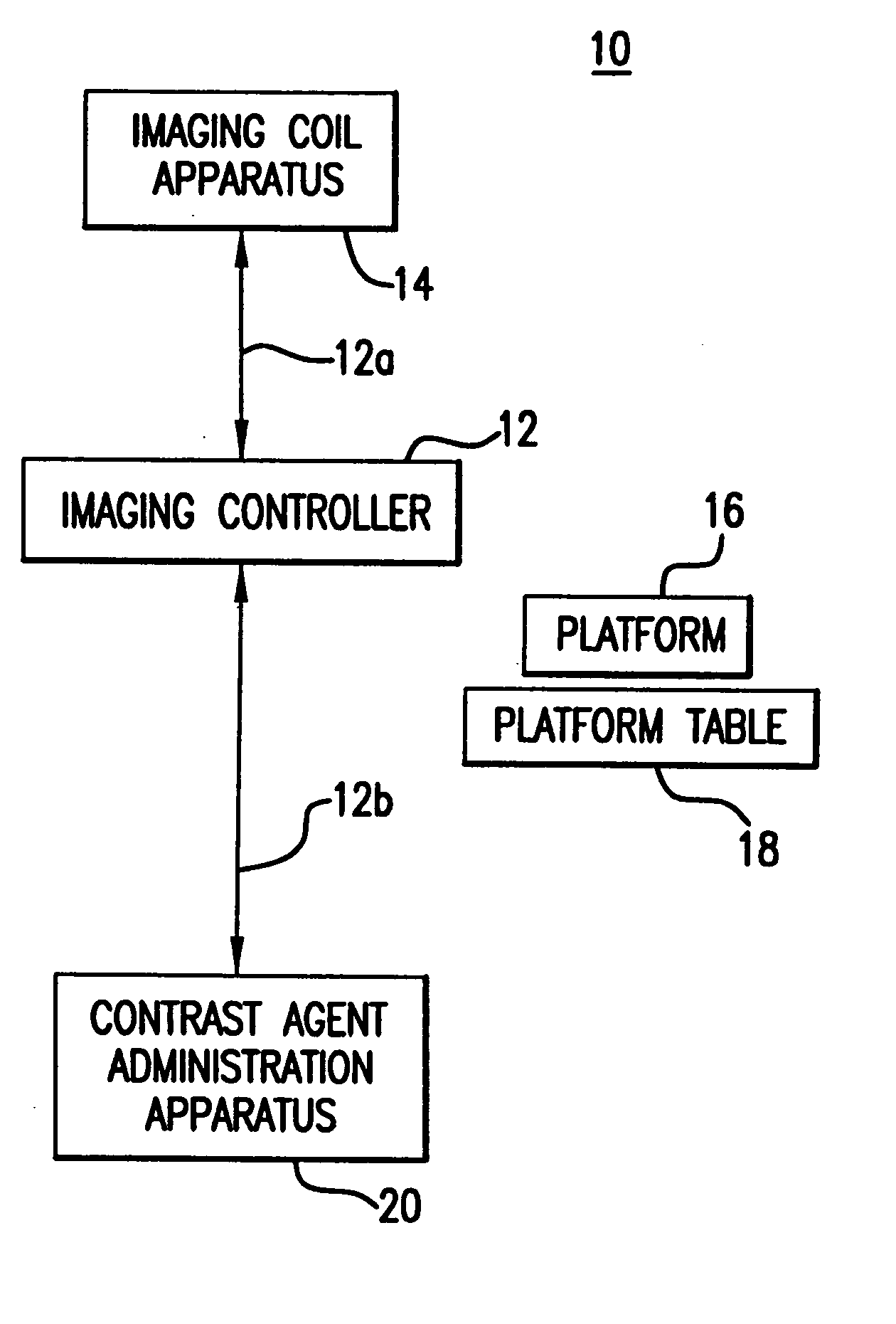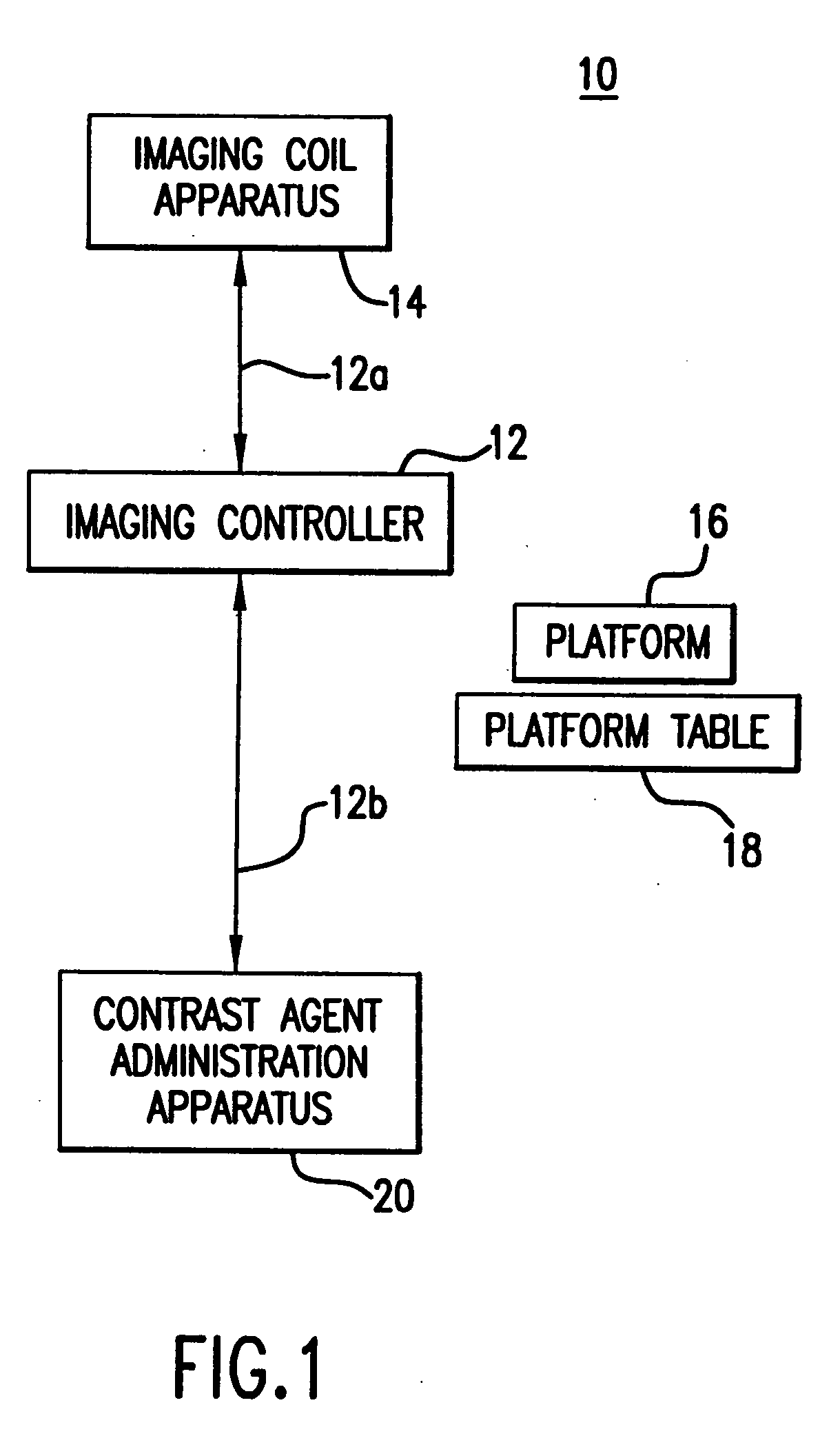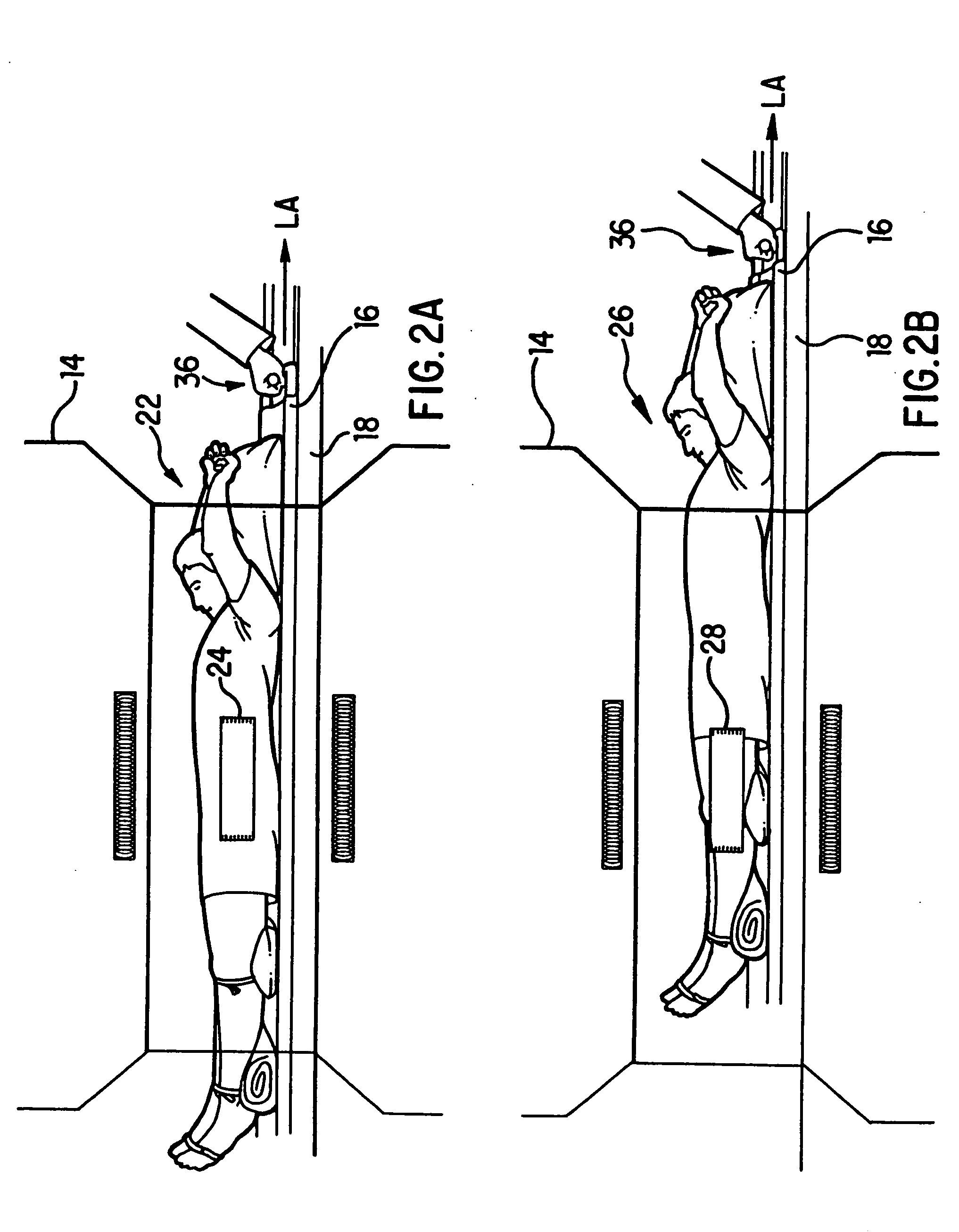Method and apparatus for magnetic resonance arteriography using contrast agents
a magnetic resonance arteriography and contrast agent technology, applied in the field of magnetic resonance imaging, can solve the problems of significant morbidity, death, and major problem of atherosclerosis in the aged population, and achieve the effects of reducing the risk of strok
- Summary
- Abstract
- Description
- Claims
- Application Information
AI Technical Summary
Benefits of technology
Problems solved by technology
Method used
Image
Examples
Embodiment Construction
[0042] The present invention is a technique of, and system for, imaging vascular anatomy over distance considerably greater than the maximum practical field of view of a magnetic resonance imaging system. The technique and system of the present invention acquires image data of a plurality of image volumes which are representative of different portions of the patient's body. The image data of each image volume includes image data which is representative of the center of k-space. The center of k-space may be characterized as 10% to 75% of the total k-space data which, as indicated above, corresponds to the lowest spatial frequency information. Thus, the image data which is representative of the center of k-space of a plurality of image volumes is collected while the concentration of the contrast agent in the artery contained within the image volume is substantially greater than the concentration of contrast agent in veins and background tissue adjacent to the artery.
[0043] The presen...
PUM
 Login to View More
Login to View More Abstract
Description
Claims
Application Information
 Login to View More
Login to View More - R&D
- Intellectual Property
- Life Sciences
- Materials
- Tech Scout
- Unparalleled Data Quality
- Higher Quality Content
- 60% Fewer Hallucinations
Browse by: Latest US Patents, China's latest patents, Technical Efficacy Thesaurus, Application Domain, Technology Topic, Popular Technical Reports.
© 2025 PatSnap. All rights reserved.Legal|Privacy policy|Modern Slavery Act Transparency Statement|Sitemap|About US| Contact US: help@patsnap.com



